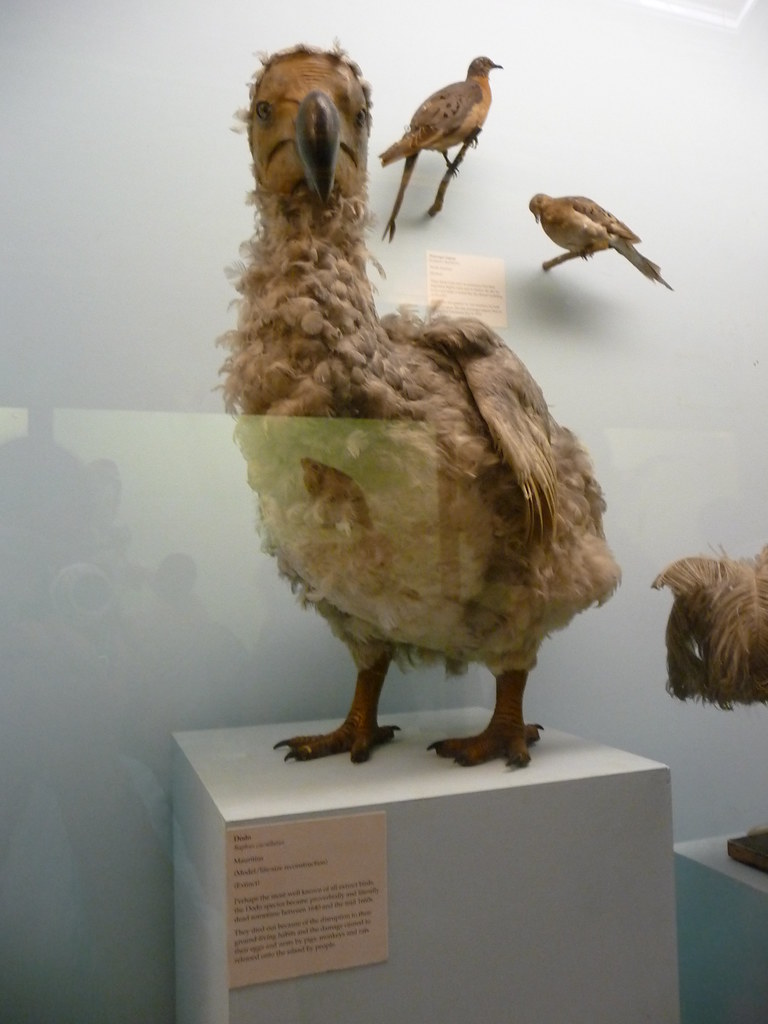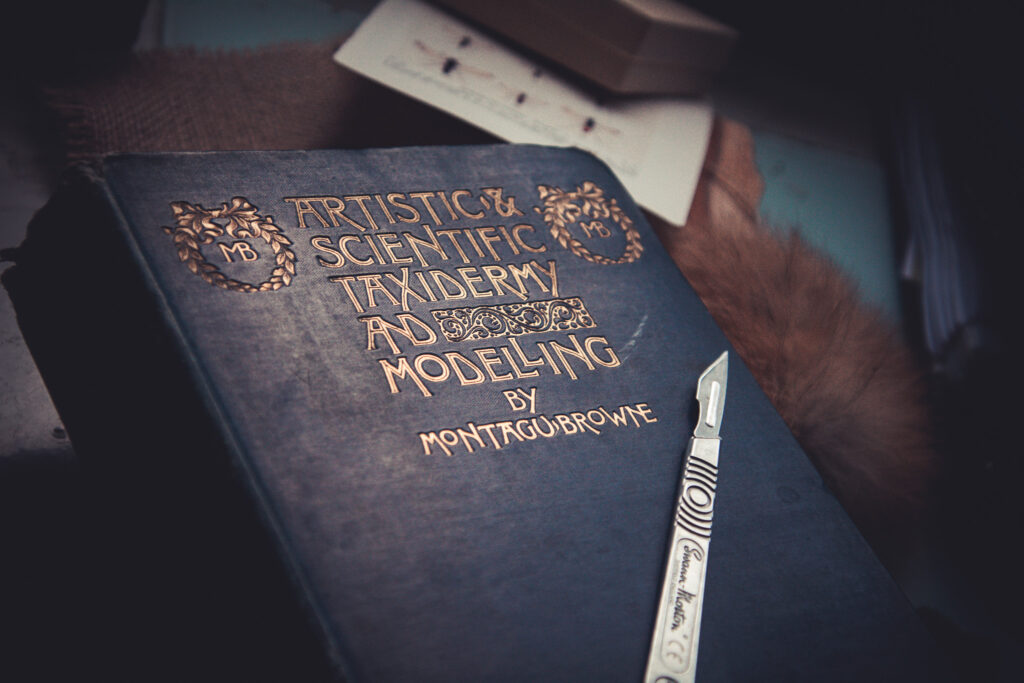This post may be a little bit different to my previous entries, but I think that blogs are primarily a place to express one’s views, so I shall use this space of the internet to voice my personal concerns and observations about some areas of the taxidermy industry.
As a disclaimer, I want you to know that I do not consider myself a ‘master’ of the art and I probably never will, because there is always something new to learn and I never want to plateau in my craft, but I feel like I have been doing taxidermy long enough to have the authority to put my following point and concern across.
The dawn of my taxidermy journey
When I first started my serendipitous taxidermy journey back in 2014, I had absolutely no intention of making a career out of it. It was purely out of intrigue, awe and wonder of the biological form of animals, a craving to learn more (to quite literally know them inside out!) and first and foremost, an unconditional love for wildlife that has been with me since childhood, that I took up this unique craft.

With the ever increasing chatter and threat of climate change, mass extinction and biodiversity deserts hot on our heels, I soon realised that the art of taxidermy was not just a nostalgic phoenix rising from the Victorian ashes, for so called ‘trophy admiration’ or ‘decoration’. The emergence is rather something more important and profound.
Dead as a dodo:
I can’t help but think that the birds that I get so much joy from observing out of my window today, may not be here within my lifetime. Utterly and completely extinct. Gone for good.
“Dead as a dodo” couldn’t be a better term. That thought is bloody terrifying. Maybe my many visits to the Natural History Museum growing up, my face pressed upon the glass of the dodo replica case
– the infamous ambassador of extinction, helped fuel my concern and care of the natural world from a young age (and indeed, perhaps guided me on my career path).
There is something incomprehensible about the idea of this creature walking the earth, that is now extinct, but still here in the form of an inanimate warning to us. I don’t want my work to end up as ‘future dodos’.
The earth will carry on without us, regardless, but it is my belief that the bigger the pool of biodiversity on it, the more utopian it will be for humans living on it right now. The unique combination of our big brains and ambidextrous thumbs are a double edged sword that can unleash as much damage as it can beneficial acts unto the world.
As we are gifted the power to do so, I believe it is our duty to keep the balance on this beautiful planet of ours, to act as stewards to respect our natural environment, work with it harmoniously in a way that can benefit all species and leave this earth a little bit better than what it was like when we arrived in it. (To define ‘better’, I envision a little bit less suffering across the board for all generations of species). I don’t believe letting species go extinct across all areas of the natural kingdom, fits in line with that regime.
Wait, where does taxidermy come in to this again?
Well, in many ways, really! As mentioned in this article from the Natural History Museum, there are many ways in which we can gather vital research from taxidermy, especially study skins in museums that date back hundreds of years. They are a biological snapshot in time that give us clues to evolutionary changes in animals and possibly give us insight wether or not they are adapting to man-made climate change, or not. To save a species, we first need to know as much about the root cause of its decline, as possible.
In a paradoxical view, taxidermy also aids as a tool to remind us as to to why life is so precious and a thing to be cherished – because of death. Because we don’t live forever, the ‘once in a lifetime’ moments and the best days of our lives would become rather dull and meaningless.
What’s the concern?
I am worried taxidermy is becoming a craft that people are pursuing to suit a certain aesthetic, without prior admiration for wildlife and the natural world.
Around the same time I started my taxidermy journey in 2014, the unusual craft was in the middle of having a resurgence, a mighty come back! As I got a bit more familiar with it, I started to integrate myself in to the community…albeit relatively small at the time, forums and Facebook groups had a lovely atmosphere full of people whom I consider budding ‘naturalists’, with a keen interest in learning more on the species we may have got our vulturous talons on.
Now, things are a little different. Of course an upsurge of members in taxidermy groups on social media increases the likelihood of more ‘bad apples’ being more prominent, as with any industry, but from my observations over the past few years I have seen many taking up the craft without the mentality of a naturalist, which I find very disheartening. Unlike the master Victorian taxidermists, today we have endless videos of all kinds of creatures from around the world and reference material at our fingertips. With a bit of practice and a passion for the natural world, reanimating a specimen to its true likeness literally couldn’t be easier!
I know it’s sometimes hard to convey emotion and good intention through text online, but I have also noted that constructive criticism is generally not as widely accepted or encouraged like it once was and can even been interpreted as a personal attack. This woeful unwillingness to accept areas of improvement, paired with amateur taxidermists with less than a years experience themselves that are offering tuition to customers who are none the wiser, seriously jeopardises the standard of taxidermy.
I am not sure if my worry for the current trajectory of the taxidermy world is unjustified,
however, I have seen a few concerning things recently that certainly don’t sit right with me. A couple of examples of this would be people using the naturally intriguing factor of the art in an insensitive way to peak people’s curiosity, acting as a shortcut to more engagement on social media platforms. Seeing the artist at work is always wonderful and what I’m about to say is probably considered a hate speech in this day and age,
but I do not want to to see dolled up women posing seductively with their half skinned animals. It heads in to the territory of sexualising taxidermy which if you break it down in to its most simple elements – sex and death, it flirts dangerously on the edge with necrophilism. This is a sub-niche of the industry I most definitely want to separate myself from. I really hope that other wonderful taxidermists that share the same principles as I do, don’t get tarred with this egocentric brush.
Taxidermy is such a magical, sensitive profession that is so much more than simply rearranging skin. Subjects that come in to the possession of a taxidermist should be handled with the utmost respect, whilst harnessing an awareness of immense privilege to work with the most wonderful of earth’s creatures in a very immersive manner, which could go on to help future generations of species – not to mention our own.

Probably the future and hope of taxidermy will be the welding of the educated artist, designer, modeller, sculptor, biologist, and naturalist; and the last two are by no means synonymous terms, as some might suppose. when this happens – and there is no reason why all these attributes should not be combined in one individual – taxidermy will become an exact science relieved, as painting is at present, by poetic inspirations.
Montagu Brown
I absolutely love my job and the weird niche I have found myself in, the amalgamation couldn’t be any more perfect for a wildlife-obsessed bird girl that grew up wanting to be a vet, but was restricted by her strong pursuit in fine art and design! My heart absolutely sang when I read this paragraph by Montagu Brown, it connected with me on a deep level as it’s everything I aspire to be and it is an honour to be on this mission to keep his dream alive.


